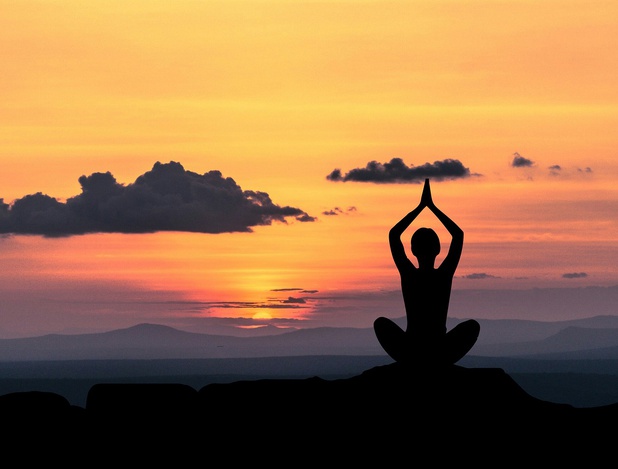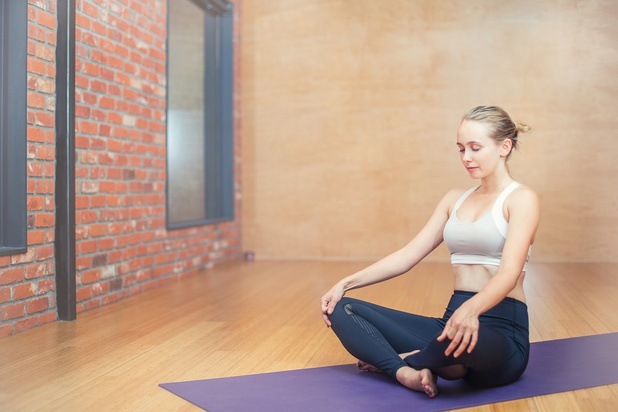While in many parts of the world, and even in many ancient civilizations, meditation is associated with certain spiritual or religious currents, in our own country it is seen more as a method of personal development, or practiced for relaxation or stress management purposes.
While some practitioners are very particular about the conditions of practice or the postures adopted during sessions, others simply recommend conditions conducive to well-being and relaxation, which may differ from one person to another.
Settling into a comfortable position (sitting or lying down) and a propitious environment (calm, incense, candles, essential oils, etc.) is probably one of the keys to the success of this practice. In fact, it seems obvious that maximum benefit is achieved if the practitioner is "at ease". Indeed, it's difficult to relax and let go in acrobatic, constricting positions that often generate unnecessary tension and stress.

When we (re)understand the existence of the chakras, the channels through which vital energy flows, and when we are aware of their importance, we know that we can improve the circulation of this energy and balance the energy centers that make up the chakras.
Chakras and vital energy are directly impacted by all environmental vibrations, waves and energies. Nowadays, there's no shortage of electromagnetic pollution! These tend to unbalance energy centers, diminish vital energy or at least hinder its proper circulation. While certain vibrations can be toxic, other energetic information can be very positive and beneficial to the quality and circulation of this vital energy.
Well-being and deep relaxation
Meditations accompanied by music or soft sounds are excellent means of reharmonization or balancing. Likewise, a few minutes' silence a day can help you settle down, calm your mind and recharge your batteries, or even rebalance your energy flow.
Meditative "work" has many benefits. People who are not very grounded, who are scattered, who don't have their "feet on the ground" or who are constantly in their thoughts can concentrate on the lower part of the body (root chakra level). By imagining themselves connected to the earth through their feet, for example, they will be able to act on their sometimes too ethereal behaviors. Others whose preoccupations are too "material" can concentrate on the upper body (chest and breathing, head = at the level of the third eye or coronal chakra at the top of the head). A musical aid or deep, calm breathing movements will in most cases enable them to let go of these material preoccupations. In (almost) all cases, well-being and deep relaxation will follow.
If you are unable to practice this discipline on your own, you may wish to call on the services of a coach or energy specialist to introduce you to the practice.
After a meditation session, it is advisable to mark the end of the ritual. Always make sure you leave the meditative state before returning to your daily routine (work, car, etc.).
This can be done by stretching, rubbing the whole body with the hands (from the center to the extremities - from the shoulders to the hands, from the trunk to the pelvis to the feet) or by rubbing the whole body more vigorously to activate both blood and energy circulation. On the one hand, this gesture is designed to cleanse the body, expelling "negative" energies by returning them to the earth, but also to reconnect with the reality of real life.
If you don't have much time in the day, a few minutes' meditation (5 minutes minimum) can be very beneficial. Of course, this time can be extended for as long as you like. It should be planned according to the time you have available, to avoid unnecessary stress and strain.
People who are nervous or have difficulty falling asleep will often find this type of practice a valuable aid, especially if it is carried out just before bedtime. Wherever and whenever meditation is practised, care should be taken to avoid disturbing vibrations (turn off or move away from telephones and WiFi) and to ensure that you are not disturbed or interrupted during the session. If you are disturbed when you are in a state of deep relaxation, you may experience a period of unease, anxiety or real difficulty in reconnecting to reality, lasting from a few minutes to several hours.

Whether you practice it for yourself or in a group, generally speaking, all meditation is in itself balancing. Some are more oriented towards chakra cleansing and purification, others towards balancing and still others towards grounding, communication with the higher self (cosmic energy) or simply letting go and relaxation.
Meditation can also be adopted within the family. It generally calms agitated or anxious children.
When practiced in the great outdoors, it provides a little "plus", since in these conditions it allows you to benefit from cosmo-telluric energies and all natural energetic information (negative ions, full light spectrum, birdsong = sound vibrations, wind in the leaves, etc.).
All meditation, visualization, relaxation, oxygenation and awareness exercises belong to the field of energy techniques and methods. Everyone needs to find the method that suits them best. They all have numerous benefits, both in terms of health and the management of daily life. And they can be practised at will and by everyone, without any danger!
Activities such as mandala coloring or child's play are sometimes combined with meditative techniques. They have been shown to bring similar benefits.
Conclusion: all positive! So a word of advice: think about meditating!



